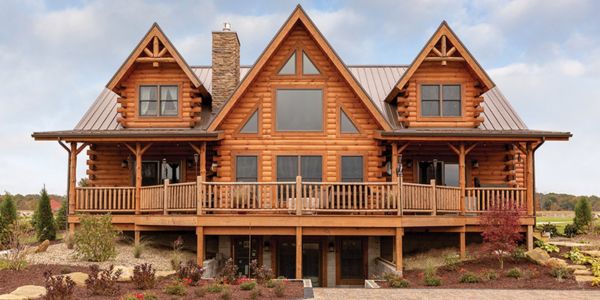
Types of Wood To Build A Log Home
Exploring the Best Wood Types for Building Your Dream Log Home
Introduction
Building a log home is a cherished dream for many, offering a rustic and charming living experience that connects us to nature's beauty. The choice of wood is a critical decision in constructing a log home, as it impacts not only the aesthetics but also the durability and energy efficiency of the structure. In this article, we'll delve into some of the most suitable wood types for building a log home that stands the test of time.
1. Western Red Cedar
Known for its natural resistance to decay and insects, Western Red Cedar is a popular choice for log homes. Its rich reddish-brown hue and fine grain lend a timeless elegance to the structure. This wood type is lightweight, making it easier to work with during construction. It also boasts excellent insulating properties, contributing to energy efficiency.

2. White Pine
White Pine is celebrated for its affordability and ease of construction. Its light color and straight grain create a classic log home appearance. While White Pine is softer compared to other options, proper sealing and maintenance can ensure its longevity. It's a favorite among DIY builders due to its workability and availability.

3. Douglas Fir
Douglas Fir is prized for its strength and structural integrity. Its warm tones and pronounced grain give log homes a distinct character. This wood type is well-suited for larger log structures and is often used for the main support beams due to its load-bearing capabilities. Proper finishing is crucial to protect Douglas Fir against moisture-related issues.

4. Eastern White Pine
Eastern White Pine is revered for its affordability, light color, and fine grain. It's a softer wood, which means it requires careful maintenance and sealing to prevent damage from weather and pests. Eastern White Pine is favored for its rustic charm and is commonly chosen for log cabins and vacation homes.
 "Eastern White Pine Siding"
"Eastern White Pine Siding"
5. Spruce
Spruce is a cost-effective wood option that offers a clean, pale appearance with a straight grain. While it's not as rot-resistant as other wood types, proper treatment and maintenance can extend its lifespan. Spruce is often used for both the exterior and interior of log homes, providing a cohesive look.

6. Cypress
Cypress is highly resistant to decay and insects, making it a durable choice for log homes. Its distinctive grain patterns range from tight to swirling, adding unique character to the structure. Cypress wood darkens over time, creating a beautiful patina that enhances the home's aesthetic appeal.

7. Oak
Oak is renowned for its strength and durability. While it's not as common in log home construction due to its higher cost and density, oak can be an excellent choice for accents and beams. Its pronounced grain and warm color lend a sense of timeless elegance to the home.

8. Lodgepole Pine
Lodgepole Pine is known for its straight and slender logs, making it a suitable option for constructing uniform and visually appealing log walls. This wood type requires proper seasoning and maintenance to prevent cracking and checking, but its affordability and availability make it an attractive choice for log home builders.

Conclusion
Selecting the right wood type for your log home involves a balance between aesthetics, budget, and maintenance considerations. Each wood type brings its unique beauty and characteristics to the structure, allowing you to create a home that reflects your personal style and embraces the rustic allure of log living. Whichever wood type you choose, proper construction techniques and regular maintenance will ensure that your log home stands strong for generations to come.

Leave a comment